That’s a Wrap! Kickstarter preview — Lights, table, action!
![]()
-
That’s a Wrap is an independently designed and published game designed by Adam Sadiq and beautifully illustrated by Madison Crabtree. It’s currently in the late stages of development and will be launching on Kickstarter in February of 2019. Throughout the game, two to five players each compete to make movies by compiling a theme, a script and some key features like actors and studio props. The winner at the end of five rounds will be the player that secures the most Oskie awards!
Overview and turn structure
At the beginning of each game of That’s a Wrap, each player begins with four genres of movie in their hand, as well as another four that come into play during a later round. Studio, Talent and Script decks of cards are shuffled and placed beside the board, with any card marked A (for A-list or Advanced, depending on the deck) also separated out for introduction later. Each player will also have an amount of influence and a stack of cash.
Depending on the player count, a number of Script and Talent cards will be placed face up on the table for players to invest in. These cards will then be bid against beginning with the first player, with every player needing to take at least one actor and one script during the early rounds, and up to two of each in later rounds. The idea here is that the game doesn’t allow anyone to go without a key component of their movie, but it is absolutely possible to be stuck with the perceived worst choice – even though that will likely mean that you didn’t spend much money.
Genre, Talent and Script cards will now all be placed in front of the players to demonstrate how their movie will play out – perhaps its a dramatic animation that features a child star in the lead role. Maybe it’s an avantgarde sports flick featuring a leading lady and a handsome hero. However these movies look, there’s still an opportunity for each player to use one or two (two can be used only if influence is paid) of their studio cards to affect the outcome of either their own movie or that of their opponents. For example, you may wish to add something special to your own film, or you can attempt to bankrupt the opposition.
Once the studio phase is over, the movie is wrapped up and scored, with each numbered dollar symbol on Talent, Script and other cards adding to the overall success rating that will then be added to a dice roll. Players may also use their own influence tokens to add value to their movie. Each dollar symbol pays that much in hard cash, but more importantly, movies worth more than a certain amount become eligible for various Oskies, which are essentially victory points. There are a few Oskies available – in particular for the movie that scores the most points, which make it eligible for “Best Movie.”
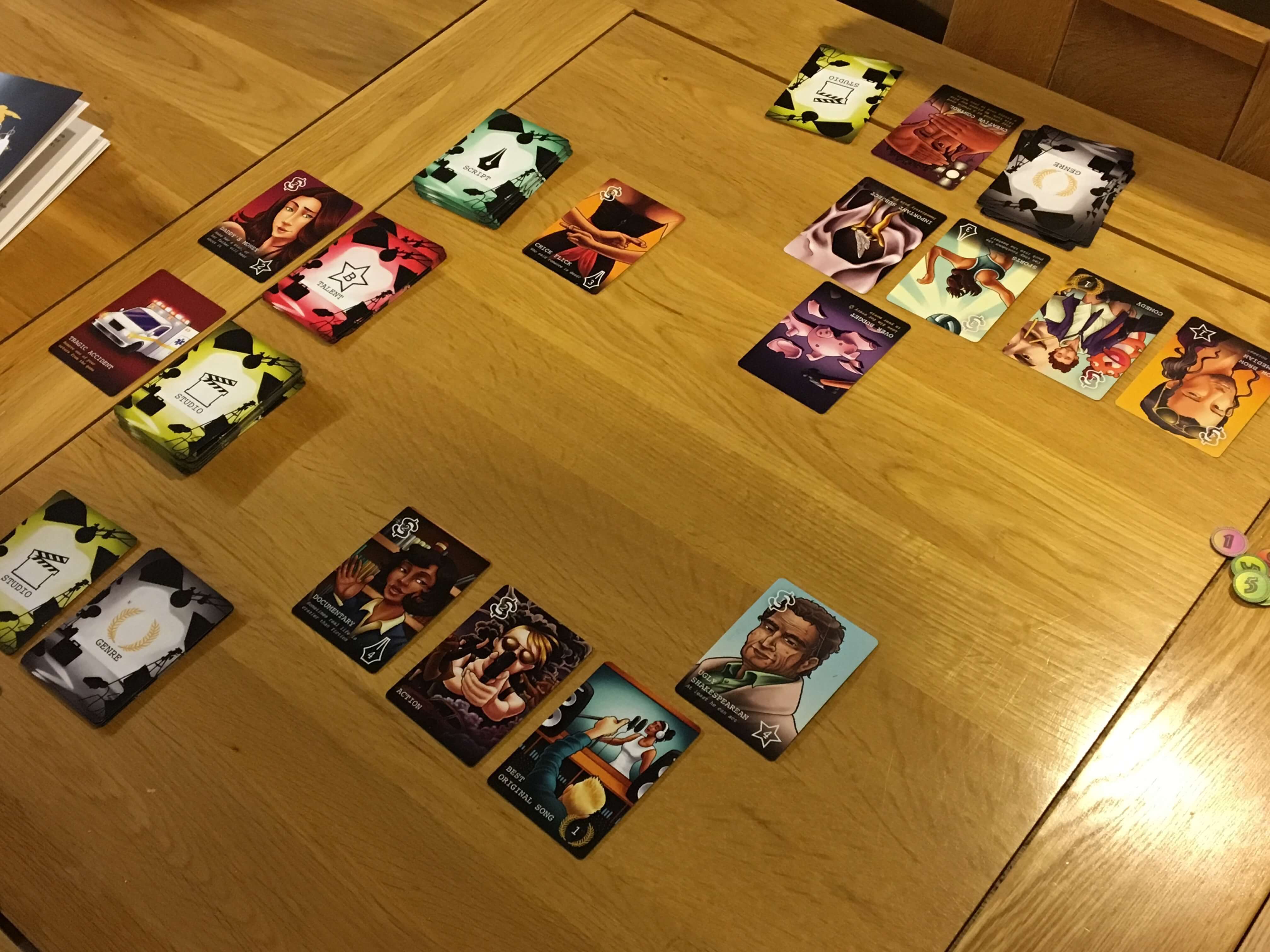
Components
The components that you can see here are all prototype, though I dare say that the cards at least are close to final, if not actually there. The artwork is highly characterful and individualistic, with stylised takes on the movie genres, actor tropes and other standout features of Hollywood life that the game portrays. I did occasionally struggle with how the symbols were supposed to work – for example, am I counting actual symbols, or the numbers within them? I am reasonably sure this will be clarified between the rules and the finalised art, but even now it’s not far from spot on.
Aside from the cards (which do make up about eighty percent of the game) there are also Oskie chips, money and influence tokens. These were clearly not final in the version I played and as such, I have not included them greatly in the pictures. My copy featured what I would suggest is finished token artwork, albeit printed on stickers and then applied to a mixture of plastic and card tokens. I suspect these will be replaced with standard punchboard tokens for the final print run, but I have no reason to think that they’ll be anything other than perfect for the job.
Finally, my instruction booklet was a handmade printout, so it’s unfair to judge the quality of the finish. The rules themselves are detailed and largely clear to follow, albeit with a few snags and minor complexities that I always tend to find when working with preview games. Again, I suspect these snags will be resolved in time for the final release, especially given that they are of a standard that would be close to acceptable for a retail version even now.
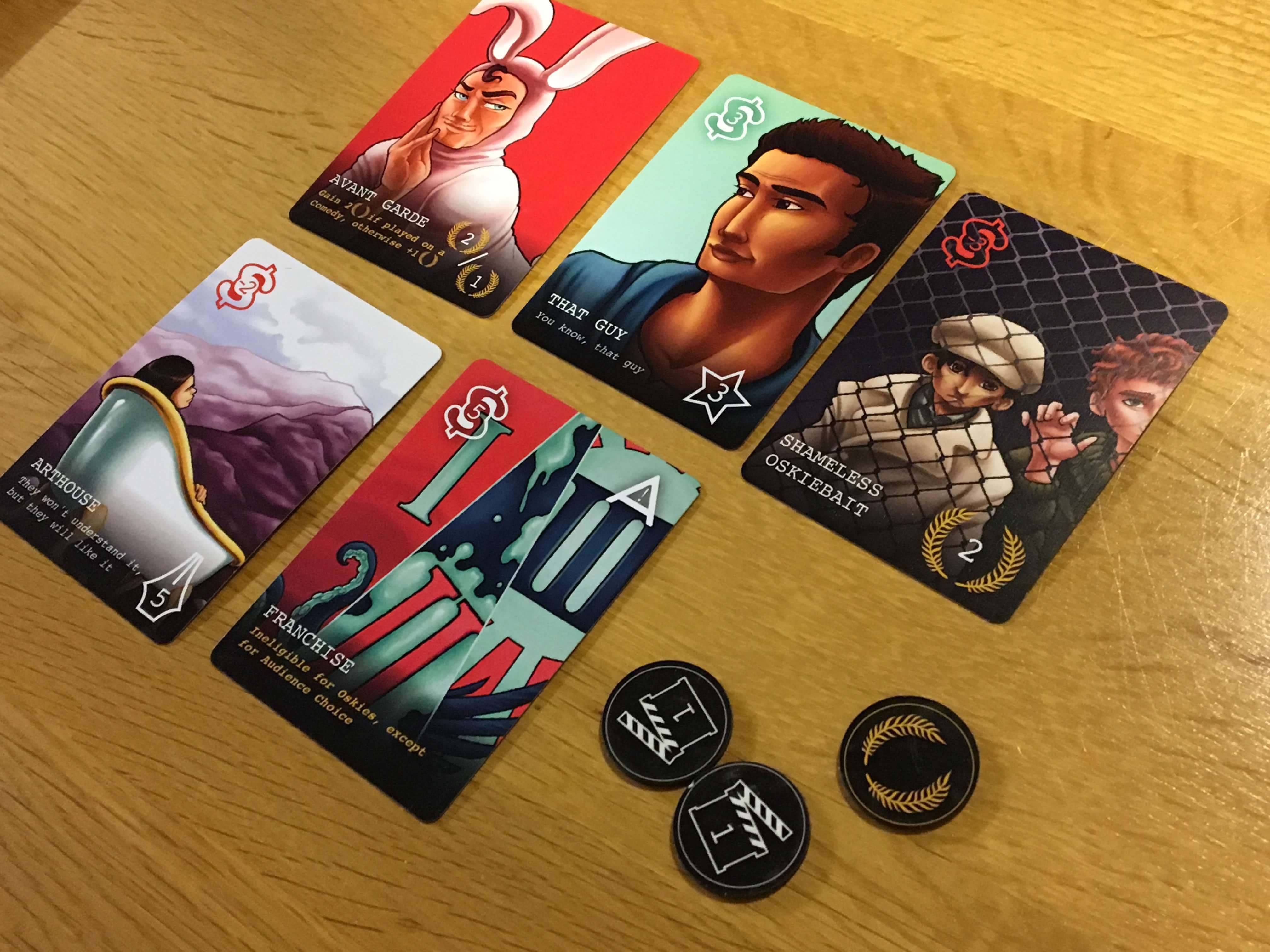
Game experience
That’s a Wrap! is a lightweight, enjoyable game that is always fun if the players at the table are prepared to engage with it and attempt to bring their movies to life through a bit of role play. If you take away the theme, then That’s a Wrap! is just a series of mathematical efficiency challenges and some occasional player interaction (via the Studio cards) but if you immerse yourself in the theme, it becomes a lot more than that. It’s the kind of game where you’ll occasionally want to make less efficient gaming decisions for the sake of preserving your artistic integrity as a director!
This lightness is occasionally offset by some escalation in the complexity of the rules about halfway through the game. If you recall that I referred to Advanced cards earlier, well they are introduced in round three (of five) usually, as is the shift from one actor per player/movie to two. Because there is no round tracker or board, you’ll need to remember what round you’re in (or track your past movies or whatever) and it can be easy to forget the shifting gear between phase one of the game and phase two.
That said, it’s not a huge change and it does all happen in the same round, so if players remember to do one thing (like add the A-list actors) then chances are, they’ll also remember to introduce the Advanced genres and deal out additional cards. The shift to allowing two actors per movie also complicates the bidding phase a bit since players are still limited to taking two actors each, but only need to take a minimum of one.
Ultimately despite these small quibbles, That’s a Wrap! is great fun for movie fans. The cards provide enough information to allow players to envisage the structure and flavour of their movie, but they are ambiguous enough that they leave something to the imagination. The Top of Their Game actor hasn’t been made specifically to look like Brad Pitt, or Cate Blanchett (or whoever) and as such, players will know what kind of actor they’ve hired, but won’t feel that they need to imagine a real celebrity in the role. As such, the role playing aspect becomes even more important.
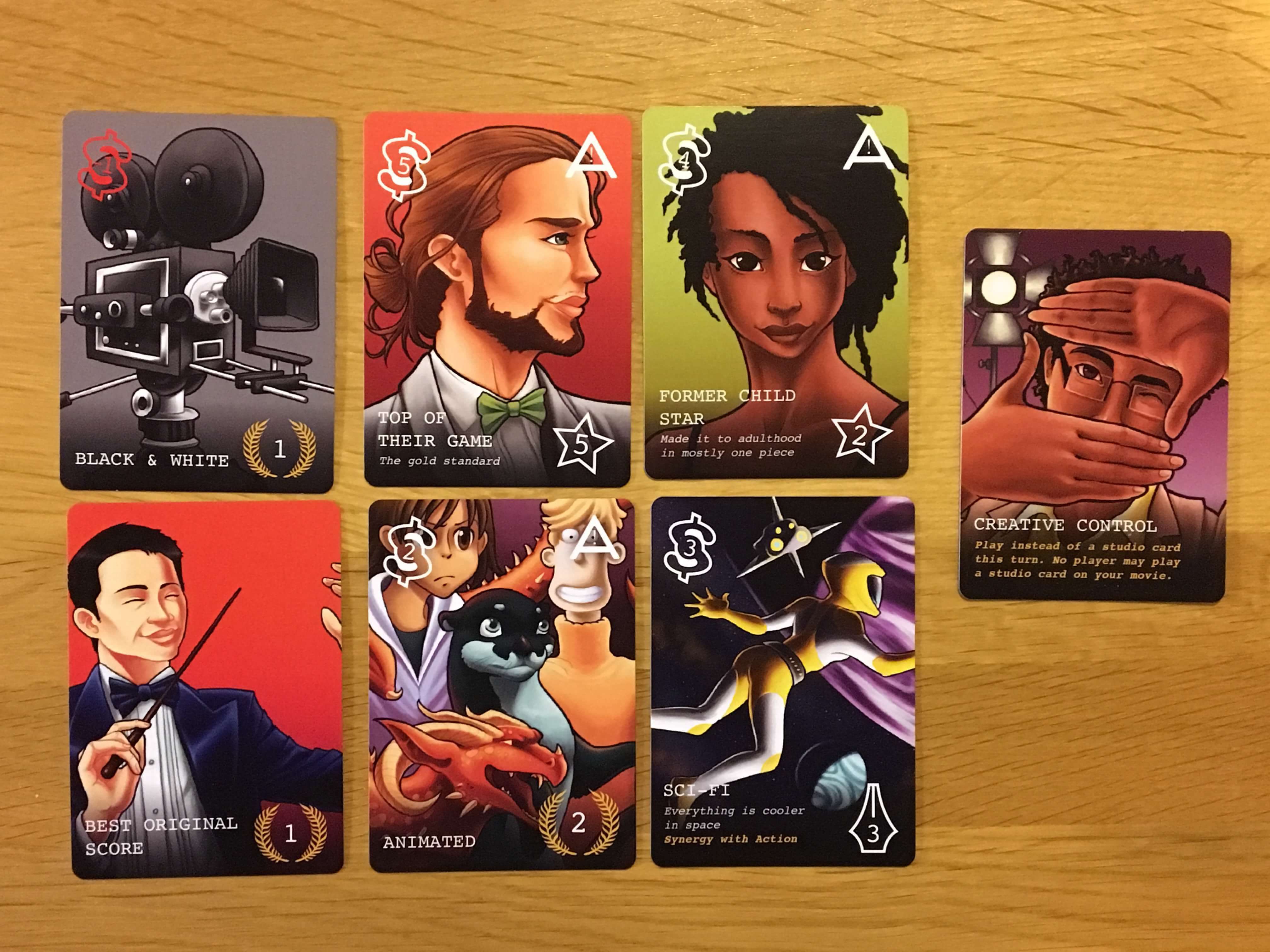
Conclusion
Even though it is still in development, That’s a Wrap! is already an attractive, fun experience that is best shared with like minded fans of the movie industry and everything that comes with it. The Studio cards (that allow players to choose between interacting with one another or to enhance their own movie) offer an interesting bit of choice and a random element, whilst the need to chase Oskies can lead to some interesting decisions about how to spend money or influence, albeit at different times. The bidding element is much more fun with more players, but it’s an interesting mechanic all the same and I much prefer it to simply drawing actors from a deck, for example.
That’s a Wrap! looks set to offer a unique take on the traditional hand management and drafting genre and I like that it features a relatively mature, detailed scoring system that drives different kinds of behavior. Once it launches on Kickstarter in February, it will certainly be one to watch and I am very interested in seeing how the final product turns out when it finally ships.
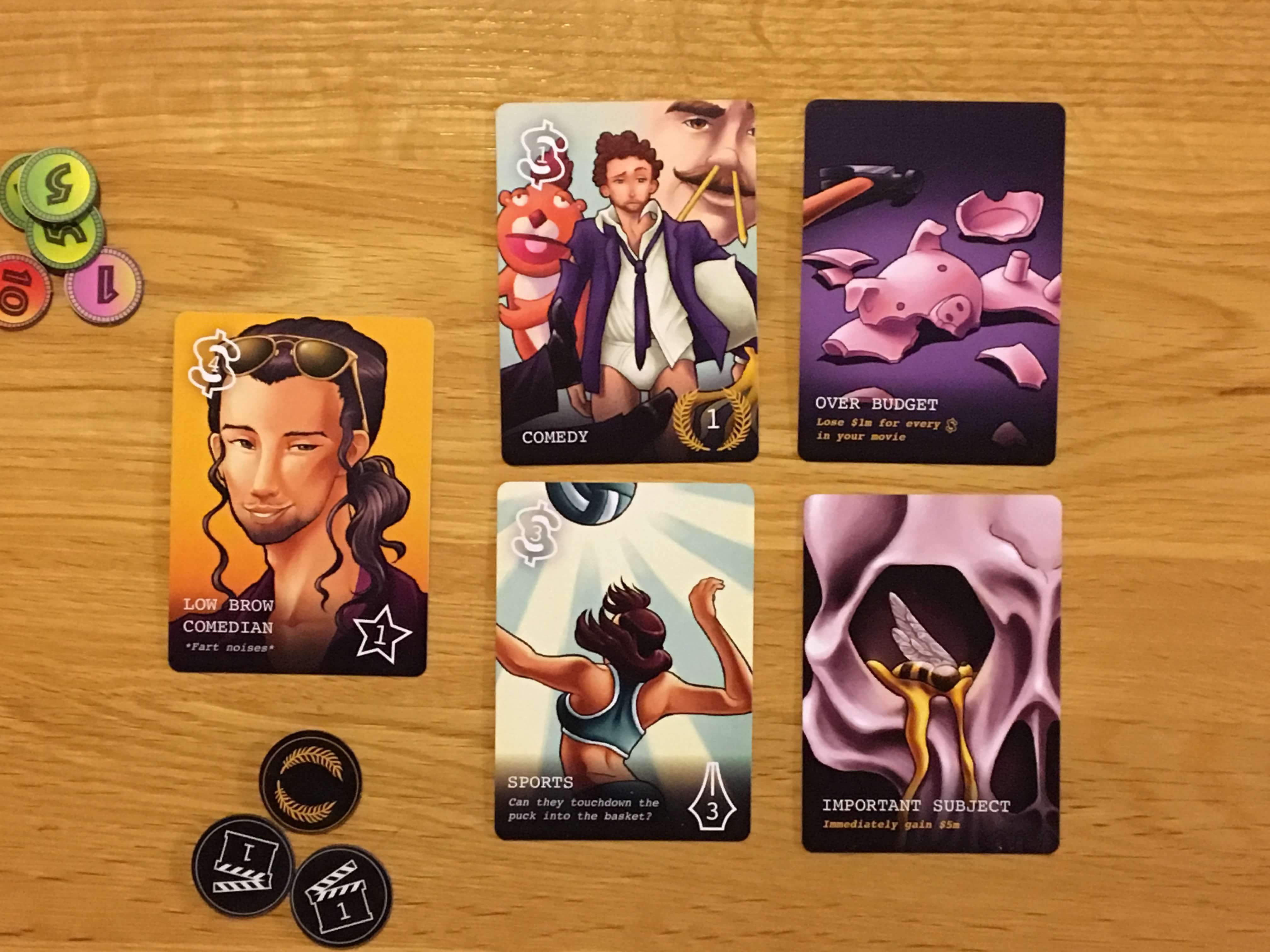
A preview copy of That’s a Wrap! was provided for preview. The game will launch on Kickstarter in February 2019.
Love board games? Check out our list of the top board games we’ve reviewed.
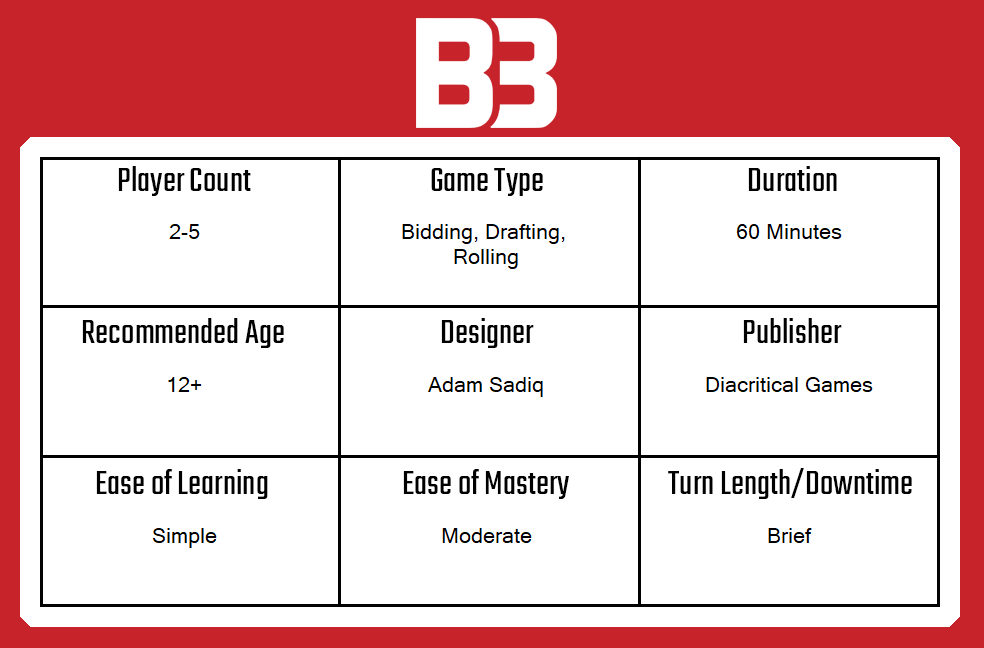
Comments are closed.